Premium Only Content
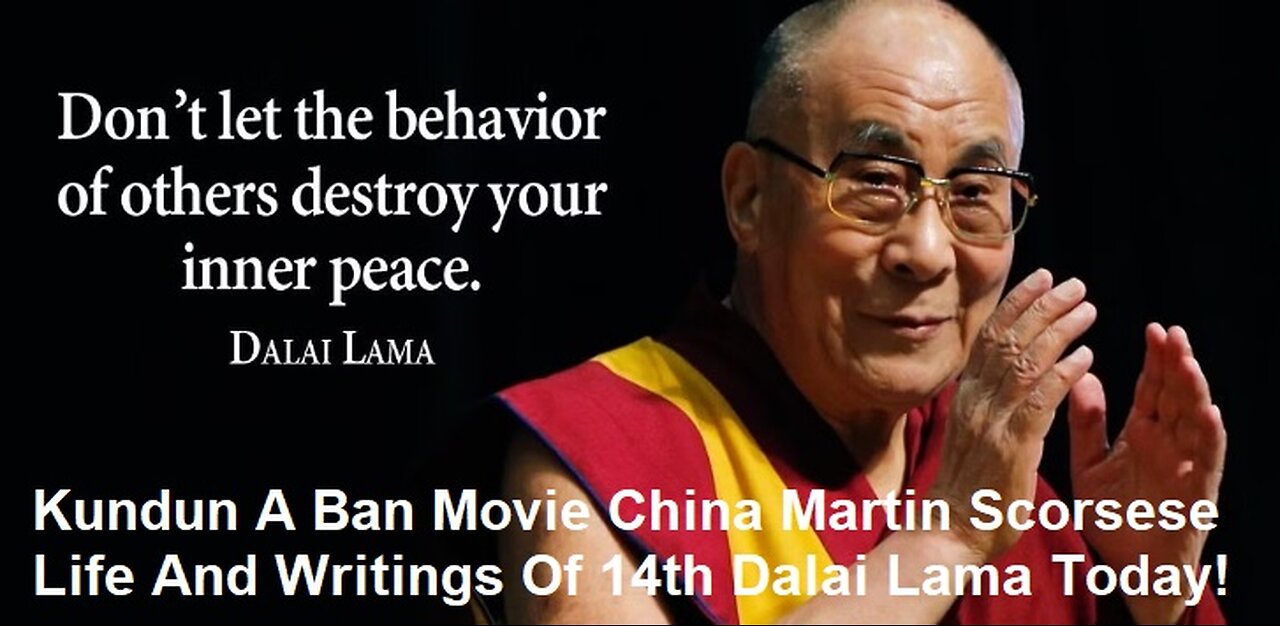
Kundun A Ban Movie In China Martin Scorsese life And Writings Of 14th Dalai Lama
The Story Of Kundun Ban In China And Made By The Martin Scorsese Film. That Disney Tried To Bury and It's been 25 years since Martin Scorsese made "Kundun" and inspired an almighty political battle between Disney and the Communist Government of China, and it's time one of his most underseen films got its due.
'Tis the season for Martin Scorsese Discourse. Well, in fairness, it feels like the endless, frequently bad-faith conversations surrounding one of our greatest living filmmakers has become a year-round event. Ever since Scorsese made his nuanced and perfectly reasonable comments about Marvel Studios and the creative curiosities of their cinematic output, poor Marty has been subjected to all manner of Film Twitter nonsense. It's baffling that one of the art form's most ardent champions, arguably the most cine-literate person in the industry, has been positioned as some kind of gatekeeping bully against the scrappy underdog that brought us the highest-grossing film franchise of all time. It's all very silly, of course, but also deeply ignorant of Scorsese's own work.
We could be here all day discussing his incredible filmography, the marginalized directors he supports as a producer, his investments into the restoration and preservation of rare films, or his work with the World Cinema Foundation and African Film Heritage Project. Here's a man who has walked the walk. He's also someone who keenly understands what it truly means to see his work be in the grips of gatekeepers and swept under the rug by corporate interests. After all, this is the man who dared to make "Kundun."
His Holiness the 14th Dalai Lama, Tenzin Gyatso, describes himself as a simple Buddhist monk. He is the spiritual leader of Tibet. He was born on 6 July 1935, to a farming family, in a small hamlet located in Taktser, Amdo, northeastern Tibet. At the age of two, the child, then named Lhamo Dhondup, was recognized as the reincarnation of the previous 13th Dalai Lama, Thubten Gyatso.
The Dalai Lamas are believed to be manifestations of Avalokiteshvara or Chenrezig, the Bodhisattva of Compassion and the patron saint of Tibet. Bodhisattvas are realized beings inspired by a wish to attain Buddhahood for the benefit of all sentient beings, who have vowed to be reborn in the world to help humanity.
The First Dalai Lama, Gedun Drupa
The First Dalai Lama, Gedun Drupa, was born in 1391 in Gyurmey Rupa, near Sakya in the Tsang region of central Tibet to Gonpo Dorjee and Jomo Namkha Kyi, a nomadic family. His given name was Pema Dorjee.
He did his primary studies of reading and writing Tibetan script with Gya-Ton Tsenda Pa-La, and then at the age of fourteen, he took his novice vows from Khenchen Drupa Sherab, abbot of Narthang monastery, who gave him the religious name of Gedun Drupa. Latter, in the year 1411, he took the Gelong vows (full ordination) from the abbot.
The young Gedun Drupa was aware of the fame of the Great Tsongkhapa, the founder of the Gelugpa School and he became his disciple in 1416. His loyalty and devotion to Tsongkhapa persuaded the great master to make Gedun Drupa his principal disciple. Tsongkhapa handed Gedun Drupa a brand new set of robes as a sign that he would spread the Buddhist teachings all over Tibet. In 1447, Gedun Drupa founded the Tashi Lhunpo monastery in Shigatse, one of the biggest monastic Universities of the Gelugpa School.
The First Dalai Lama, Gedun Drupa was a great person of immense scholarship, famous for combining study and practice, and wrote more than eight voluminous books on his insight into the Buddha's teachings and philosophy. In 1474, at the age of eighty-four, he died while in meditation at Tashi Lhunpo monastery.
The Second Dalai Lama, Gedun Gyatso
The Second Dalai Lama, Gedun Gyatso was born in 1475 in Tanag Sekme, near Shigatse in the Tsang region of central Tibet to Kunga Gyaltso and Machik Kunga Pemo, a farming family.
His father was a well-known tantric practitioner belonging to the Nyingmapa sect. When Gedun Gyatso was able to speak, he was reported to have told his parents that his name was Pema Dorjee, the birth name of the First Dalai Lama and that he would like to live in Tashi Lhunpo monastery. When he was conceived, his father had a dream in which someone dressed in white appeared and told him to name his son Gendun Drupa and also said that his son would be a person with the ability to recollect his past lives. However, his father named him Sangye Phel.
He received his primary education from his father and at the age of eleven he was recognized as the reincarnation of Gendun Drupa, the First Dalai Lama and was enthroned at Tashi Lhunpo monastery. In 1486, he took his novice vows from Panchen Lungrig Gyatso and his vows of Gelong (full ordination) from Choje Choekyi Gyaltsen, who gave him the ordained name of Gedun Gyatso. He studied at Tashi Lhunpo and Drepung monasteries.
In 1517, Gedun Gyatso became the abbot of Drepung monastery and in the following year, he revived the Monlam Chenmo, the Great Prayer Festival and presided over the events with monks from Sera, Drepung and Gaden, the three great monastic Universities of the Gelugpa Sect. In 1525, he became the abbot of Sera monastery. He died at the age of sixty-seven in 1542.
The Third Dalai Lama, Sonam Gyatso
The Third Dalai Lama, Sonam Gyatso was born in 1543 at Tolung, near Lhasa, to Namgyal Drakpa and Pelzom Bhuti, a rich family.
His parents had already had many children, but they had all died and to ward off any misfortune that might take away this newborn child from them, they fed him on the milk of a white goat and named him Ranu Sicho Pelzang - The prosperous one saved by goat's milk.
In 1546, at the age of three, Sonam Dakpa Gyaltsen, the ruler of Tibet, and Panchen Sonam Dakpa recognized him as the reincarnation of Gedun Gyatso. He was escorted to Drepung monastery in a great procession and was enthroned and his hair was cut, symbolizing his renunciation of the world. He took novice vows from Sonam Dakpa at the age of seven and assumed the name of Sonam Gyatso. At the age of twenty-two, he took the Gelong vows (full ordination) of Bhiksu from Gelek Palsang.
In 1552, Sonam Gyatso became the abbot of Drepung monastery and in 1558, the abbot of Sera monastery. In 1574, he established the Phende Lekshe Ling in order to assist him in carrying out his religious activities, which is now known as Namgyal monastery and still serves as the Dalai Lama's personal monastery. It was during his time, the Mongolian King Altan Khan offered him the title of Dalai Lama which literally means Ocean of Wisdom and in return, the Dalai Lama conferred on Altan Khan the title of Brahma, the king of religion. The Third Dalai Lama also founded Kumbum monastery in Tsongkhapa's birthplace and Lithang monastery in Kham. In 1588, he died while teaching in Mongolia.
The Fourth Dalai Lama, Yonten Gyatso
The Fourth Dalai Lama, Yonten Gyatso, was born in 1589 in Mongolia to the Chokar tribal chieftain Tsultrim Choeje, who was the grandson of Altan Khan, and his second wife PhaKhen Nula.
With predictions from the state oracles and auspicious signs at his birth, the abbot of Gaden monastery recognized him as the true reincarnation of the Third Dalai Lama and he was given the name of Yonten Gyatso. His parents, however, refused to part with their son until he was older, so he received his primary religious education in Mongolia from Tibetan Lamas.
In 1601, at the age of twelve, Yonten Gyatso was escorted to Tibet accompanied by his father and the former Gaden throne holder, Sangya Rinchen, who bestowed the vows of novice monk on him. In 1614, at the age of twenty-six, he took the Gelong vows (full ordination) from the Fourth Panchen Lama, Lobsang Choegyal. He later became the abbot of Drepung monastery and then Sera monastery. In 1617, at the age of twenty-seven he died at Drepung monastery.
The Fifth Dalai Lama, Lobsang Gyatso
The Fifth Dalai Lama, Lobsang Gyatso, was born in 1617 in Lhoka Chingwar Taktse, south of Lhasa to Dudul Rabten and Kunga Lhanzi.
When Sonam Choephel, the chief attendant of the Fourth Dalai Lama heard of the exceptional abilities of the Chong-Gya boy, he paid a visit to the child and showed him articles belonging to the previous Dalai Lama. The boy at once said those belonged to him. Sonam Choephel kept the discovery of the Fifth Dalai Lama a secret because of the turbulent political situation. When things settled down, the Fifth Dalai Lama was taken to Drepung monastery where he was ordained into monkhood by the Third Panchen Lama, Lobsang Chogyal, and was given the name Ngawang Lobsang Gyatso.
The Fifth Dalai Lama was recognized at a time when Tibet was in political turmoil. However, all this uncertainty was laid to rest by Gushir Khan, the chief of the Qoshot Mongols and in 1642, the Dalai Lama was enthroned in the main hall of Shigatse as both the spiritual and political leader of Tibet. In 1645, the Dalai Lama held a meeting with high officials of Gaden Phodrang on the construction of the Potala Palace on the Red Hill, where the 33rd King of Tibet Songtsen Gampo had built a red fort. In the same year, the construction started and it took almost forty-three years to complete.
In 1649, Sunzhi, the Manchu emperor, invited the Dalai Lama to Peking. When he reached the Chinese province of Ningxia, he was greeted by the emperor's minister and military commander who came with three thousand cavalry to escort the Tibetan leader. The emperor himself traveled from Peking and greeted him at a place called Kothor. In the Chinese capital, the Dalai Lama stayed at the Yellow Palace, built for him by the emperor. When the emperor officially met the Dalai Lama, the two of then exchanged titles. In 1653, the Dalai Lama returned to Tibet.
Gushir Khan died in 1655, as did Sonam Choephel, the Desi. The Dalai Lama appointed Gushir Khan's son Tenzin Dorjee as the new Mongol king, and Drong Mey-Pa Thinley Gyatso succeeded the latter to the post of Desi. When the Manchu Emperor died in 1662, his son, K'ang-si, ascended the Manchu throne. In the same year the Panchen Lama died at the age of ninety-one. In 1665, after a petition from Tashilhunpo monastery, the Dalai Lama recognized a boy from Tsang region as the reincarnation of the late Panchen Lama and gave the boy the name of Lobsang Yeshi.
The Fifth Dalai Lama was a great scholar, well versed in Sanskrit. He wrote many books, including one on poetry. He also established two educational institutions, one for lay officials and another for monk officials, where they were taught Mongolian, Sanskrit, astrology, poetry, and administration. He was a man of few words, but what he said carried conviction and influenced rulers beyond the borders of Tibet. In 1682, at the age of sixty-five he died before completing the construction of the Potala Palace, however, not before entrusting the responsibility of the construction to Sangya Gyatso, the new Desi with the advice to keep his death secret for the time being.
The Sixth Dalai Lama, Tsangyang Gyatso
The Sixth Dalai Lama, Tsangyang Gyatso, was born in 1682 in the region of Mon Tawang in present-day Arunachal Pradesh, India to Tashi Tenzin and Tsewang Lhamo.
In order to complete the Potala Palace, Desi Sangye Gyatso carried out the wishes of the Fifth Dalai Lama and kept his death a secret for fifteen years. People were told that the Great Fifth was continuing his long retreat. On important occasions the Dalai Lama's ceremonial gown was placed on the throne. However, when Mongol princes insisted on having an audience, an old monk called Depa Deyrab of Namgyal Monastery, who resembled the Dalai Lama, was hired to pose in his place. He wore a hat and eyeshadow to conceal the fact that he lacked the Dalai Lama's piercing eyes. The Desi managed to maintain this charade till he heard that a boy in Mon exhibited remarkable abilities. He sent his trusted attendants to the area and in 1688, the boy was brought to Nankartse, a place near Lhasa. There he was educated by teachers appointed by the Desi until 1697, when the Desi sent his trusted minister, Shabdrung Ngawang Shonu to the Manchu court to inform Emperor K'ang-si of the death of the Fifth and discovery of the Sixth Dalai Lama. He announced the fact to the people of Tibet, who greeted the news with gratitude and joy and thanked the Desi for saving them from lamenting the setting of the sun and, instead, making them rejoice in its rising.
The Desi invited the Fifth Pachen Lama, Lobsang Yeshi, to Nankartse, where Tibet[s second highest religious leader administered the vows of a novice monk to the youth and named him Tsangyang Gyatso. In 1697, the fourteen-year old was enthroned as the Sixth Dalai Lama in a ceremony attended by Tibetan government officials representing the three major monasteries - Sera, Gaden, and Drepung - Mongol princes, representatives of Emperor K'ang-si and the Lhasa populace.
In 1701 there was a conflict between the Desi and Lhasang Khan, the descendant of Gushir Khan, and the latter killed the Desi Sangya Gyatso, which disturbed the young Dalai Lama. He left his monastic study and chose the outdoor life, he had no plans to take the fully ordained vows. In fact, he visited the Panchen Lama in Shigatse and requested his forgiveness, and renounced even the vows of a novice monk. Though he continued to live in the Potala Palace, he roamed around Lhasa and other outlying villages, spending his days with his friends in the park behind the Potala Palace and nights in taverns in Lhasa and Shol (an area below the Potala) drinking chang and singing songs. He was known to be a great poet and writer and he wrote several poems. In 1706, he was invited to China and died on the way.
The Seventh Dalai Lama, Kelsang Gyatso
In retrospect, the Tibetan believed that Tsangyang Gyatso predicted his own rebirth at Lithang in Kham when he wrote this song:
White crane, lend me your wings,
I go no farther than Lithang,
And thence, return again.
Sure enough, the Seventh Dalai Lama was born in 1708 to Sonam Dargya and Lobsang Chotso in Lithang, two years after the disappearance of the Sixth.
Thupten Jampaling Monastery, which was founded in Lithang by the Third Dalai Lama, was astonished by the wonders of the child and also the state oracles of Lithang had predicted that the newborn child would be the reincarnation of the late Dalai Lama. However due to the turbulent political situation, they could not escort the new Dalai Lama to Lhasa, and he was taken to Kumbum monastery, where he was ordained by Ngawang Lobsang Tenpai Gyaltsen.
In 1720, he was enthroned in the Potala Palace and he took the novice vows of monkhood from Panchen Lobsang Yeshi, who gave him the name Kelsang Gyatso. In 1726, during the auspicious month of Saka Dawa, he took the Gelong vows (full ordination) from Panchen Rinpoche. He sought the tutor of Panchen Lobsang Yeshi, the Abbot of Gyumey monastery and the Abbot of Shalu monastery, Ngawang Yonten, from whom he studied the entire major Buddhist philosophical treatises and became a master in both the sutra and tantra.
In 1751, at the age of forty-three, he constituted the 'Kashag' or council of ministers to administer the Tibetan government and then abolished the post of Desi, as it placed too much power in one man's hand. The Dalai Lama became the spiritual and political leader of Tibet. At the age of forty-five, he founded the Tse-School in the Potala Palace and built the new palace of Norling Kalsang Phodrang. The Seventh Dalai Lama was a great scholar and wrote many books, especially on the tantra. He was also a great poet who, unlike Tsangyang Gyatso, dwelt on spiritual themes. His simple and unblemished life won him the hearts of all Tibetans. He died in 1757.
The Eighth Dalai Lama, Jamphel Gyatso
The Eighth Dalai Lama, Jamphel Gyatso, was born in 1758 at Thobgyal, Lhari Gang in the Tsang region of southwestern Tibet. His father, Sonam Dhargye, and mother, Phuntsok Wangmo, were originally from Kham and traced their ancestry to Dhrala Tsegyal, one of the legendary heroes of the Gesar epic.
As soon as Jamphel Gyatso was conceived, Lhari Gang was blessed with a bumper harvest with each stalk of barley bearing three, four and five ears - something unprecedented. When the mother and a relative were having their supper in the garden, a huge rainbow appeared, one end of which touched the mother's shoulder. (This is regarded to be a very auspicious omen, associated with the birth of a holy being.) Not long after his birth, Jamphel Gyatso was frequently observed to be looking heavenward with a smile on his face. He was also seen to be attempting to sit in a meditative, lotus posture. When Palden Yeshi, the Sixth Panchen Lama, heard about this boy, he pronounced: This is the authentic reincarnation of the Dalai Lama.
As the child began to speak, he said: "I will go to Lhasa at the age of three". Now the whole of Tibet was convinced that this child was the Eighth Dalai Lama. Darkpa Thaye, the chief attendent of the Seventh Dalai Lama, came to Lhasa with a large contingent of lamas and Tibetan government officials. They took the boy, then two and a half years old, to Tashi Lhunpo monastery in Shigatse, performed the recognition ceremony and the Panchen Lama gave the boy the name Jamphel Gyatso.
In 1762, the boy was escorted to Lhasa and enthroned in the Potala Palace. The enthronement ceremony was presided over by Demo Tulku Jamphel Yeshi, who was the first Regent to represent the Dalai Lamas when they were minors. At the age of seven, he took the novice vows of monkhood from the Panchen Lama and then he was fully ordained in 1777. In addition to his remarkable spiritual legacy, it was the Eighth Dalai Lama who built the famous Norbulingka Park and Summer Palace on the outskirts of Lhasa. In 1804, he died at the age of forty-seven.
The Ninth Dalai Lama, Lungtok Gyatso
The Ninth Dalai Lama, Lungtok Gyatso was born in 1805 in Dan Chokhor, a small village in Kham to Tenzin Choekyong and Dhondup Dolma.
In 1807, he was recognized as the reincarnation of the Eighth Dalai Lama and was escorted to Lhasa with great ceremony. In 1810, he was enthroned at the Potala Palace. He took his novice vows from the Pachen Lama, who gave him the name Lungtok Gyatso. Unfortunately, he died in 1815 at the very young age of nine.
The Tenth Dalai Lama, Tsultrim Gyatso
The Tenth Dalai Lama, Tsultrim Gyatso The Tenth Dalai Lama, Tsultrim Gyatso, was born in 1816 in Lithang in Kham to Lobsang Dakpa and Namgyal Bhuti.
In 1822, he was recognized and enthroned in the Potala Palace and in the same year, he took his novice vows of monkhood from the Panchen Lama, Tenpai Nyima who gave him the name Tsultrim Gyatso. In 1826, at the age of ten, he was enrolled in Drepung monastery where he studied various Buddhist philosophical texts and mastered both the sutra and tantra. In 1831, he reconstructed the Potala Palace and at the age of nineteen, he took the Gelong vows (full ordination) from the Panchen Lama. However, he was constantly in poor health and died in 1837.
The Eleventh Dalai Lama, Khedrup Gyatso
The Eleventh Dalai Lama, Khedrup Gyatso, was born in 1838 at Gathar in Kham Minyak to Tsetan Dhondup and Yungdrung Bhuti.
In 1841 he was recognized as the new Dalai Lama and the Panchen Lama, Tenpai Nyipa, cut his hair and gave him the name Khedrup Gyatso. In 1842, he was enthroned in the Potala Palace and at the age of eleven, he took the novice vows of monkhood from the Panchen Lama. Despite his young age, he assumed the responsibility of Tibetan spiritual and political leader at the request of the Tibetan people. However, he suddenly died in 1856 in the Potala Palace.
The Twelfth Dalai Lama, Trinley Gyatso
The Twelfth Dalai Lama, Trinley Gyatso was born in 1856 in Lhoka, a place near Lhasa to Phuntsok Tsewang and Tsering Yudon.
In 1858, the young boy as Dalai Lama was escorted to Lhasa where Reting Ngawang Yeshi Tsultrim Gyaltsen, the regent gave him the name Thupten Gyatso. In 1860, at the age of five he took the novice vows of monkhood from the Gaden Throne Holder Lobsang Khenrab and he was enthroned in the Potala Palace. In 1873, at the age of eighteen, he took on full responsibility as both spiritual and political leader of Tibet. In 1875, he died at the age of twenty in the Potala Palace.
The Thirteenth Dalai Lama, Thupten Gyatso
The Thirteenth Dalai Lama, Thupten Gyatso, was born in the Fire Mouse year of 1876 at Langdun in Dagpo, central Thakpo Tibet to Kunga Rinchen and Lobsang Dolma, a peasant couple.
In 1877, he was recognized as the reincarnation of the 12th Dalai Lama following predictions from the State Oracle Nechung and other auspicious signs at his birthplace. He was then escorted to Lhasa. In 1878 the Eighth Panchen Lama, Tenpai Wangchuk, performed the hair-cutting ceremony and gave him the name Ngawang Lobsang Thupten Gyatso Jigdral Chokley Namgyal. In 1879, he was enthroned in the Grand Reception Hall at the Potala Palace. Later that year, he received the Upasaka (Tib.: ge-nyen) vows from the Regent Tatsak Rinpoche, Ngawang Palden Yeshi. In 1882, at age six, the Thirteenth Dalai Lama was formally ordained as a novice monk (Tib.: ge-tsul) by the same Regent.
And in 1895 he took the full monk ordination (Tib.: ge-long) from his tutor, Phurchok Ngawang Jampa Rinpoche, in the Jokhang Temple, Lhasa, who served as both the Preceptor and Procedural Master of the ceremony. Phurbuchok was assisted by many eminent Buddhist masters of Tibet at that time, including Ling Rinpoche Lobsang Lungtok Tenzn Thinley and the Gaden Throne Holder, who served as the Secret Inquiry Master and so forth required by the ordination ceremony. On 27 September 1895 he finally assumed the political and spiritual authority of Tibet and was thrown into the thick of the Great Game played out by Czarist Russia and British India on the fringes of their sprawling empires. He went through the British invasion of Tibet in 1904 and the Chinese invasion of his country in 1909/10 but survived the ordeals of both experiences, with his authority enormously enhanced.
When the news spread in 1910 that Lu Chan, a Chinese General of the Manchu force, arrived in Lhasa, the Dalai Lama and some of the most important officials fled Lhasa and headed to India. The group crossed Dromo and held a negotiation with the Chinese invaders at the Jelep-la Pass, which separates Tibet and Sikkim.
In 1911, the Manchu Dynasty was overthrown and the Tibetans took this opportunity to expel the remnant Manchu forces from Tibet. The Dalai Lama returned to Tibet and went on to exercise an unprecedented political authority not seen since the reign of the Fifth Dalai Lama. Besides attempting to modernize Tibet, the Dalai Lama also tried to eliminate some of the more oppressive features of the Tibetan monastic system. During his exile in India, the Dalai Lama was fascinated by the modern world and he introduced the first Tibetan currency notes and coins. On 13 February 1913, he made public the five-point statement reasserting Tibet's Independence. Also, in 1913 he established the first post office in Tibet and sent four young Tibetans to study engineering in England.
In 1914, he strengthened Tibet's military force by organizing special training for the Tibetan army. In 1917 he established the Men-Tsee-Khang (Tibetan Medical and Astrology Institute) in Lhasa to preserve the unique traditional Tibetan medical and astrological systems. For that reason, he selected about a hundred young and intelligent students to train in Men-Tse-Khang. In 1923, he established a Police Headquarter in Lhasa for the security and welfare of the Tibetan people. In the same year he established the first English school of Tibet in Gyaltse. Sadly, he died in 1933 at the age of fifty-eight before accomplishing his goal for Tibet's modernization.
His Holiness the Dalai Lama was born on 6 July 1935 to a Tibetan farming family in the small village of Taktser, located in the province of Amdo. He was named Lhamo Thondup, which literally means ‘Wish-Fulfilling Goddess’. Taktser (Roaring Tiger) was a small village that stood on a hill overlooking a broad valley. Its pastures had not been settled or farmed for long, only grazed by nomads. The reason for this was the unpredictability of the weather in that area. His Holiness writes in his autobiography, “During my early childhood, my family was one of twenty or so making a precarious living from the land there”.
His Holiness’s parents were small farmers who mostly grew barley, buckwheat and potatoes. His father was a man of medium height with a very quick temper. “I remember pulling at his moustache once and being hit hard for my trouble”, recalls His Holiness. “Yet he was a kind man too and he never bore grudges”. His Holiness recalls his mother as undoubtedly one of the kindest people he has ever known. She gave birth to sixteen children, of whom seven survived.
His Holiness had two sisters and four brothers. Tsering Dolma, the eldest child, was eighteen years older than His Holiness. At the time of His Holiness’s birth she helped his mother run the house and acted as the midwife. “When she delivered me, she noticed that one of my eyes was not properly open. Without hesitation she put her thumb on the reluctant lid and forced it wide fortunately without any ill effect”, narrates His Holiness. He had three elder brothers: Thubten Jigme Norbu - the eldest, who was recognized as the reincarnation of a high lama, Taktser Rinpoche - Gyalo Thondup and Lobsang Samden. The youngest brother, Tenzin Choegyal was also recognized as the reincarnation of another high lama, Ngari Rinpoche.
“Of course, no one had any idea that I might be anything other than an ordinary baby. It was almost unthinkable that more than one tulku (reincarnate lama) could be born into the same family and certainly my parents had no idea that I would be proclaimed Dalai Lama”, His Holiness writes. Although His Holiness’s father’s remarkable recovery from critical illness at the time of His Holiness’s birth was auspicious, it was not taken to be of great significance. “I myself likewise had no particular intimation of what lay ahead. My earliest memories were very ordinary.” His Holiness recollects, among his earliest memories, observing a group of children fighting and running to join the weaker side.
“One thing that I remember enjoying particularly as a very young boy was going into the chicken coop to collect the eggs with my mother and then staying behind. I liked to sit in the hens' nest and make clucking noises. Another favourite occupation of mine as an infant was to pack things in a bag as if I was about to go on a long journey. I'm going to Lhasa, I'm going to Lhasa, I would say. This, coupled with my insistence that I be allowed always to sit at the head of the table, was later said to be an indication that I must have known that I was destined for greater things”.
His Holiness is considered to be the present incarnation of the previous thirteen Dalai Lamas of Tibet (the first having been born in 1391 CE), who are in turn considered to be manifestations of Avalokiteshvara, or Chenrezig, the Bodhisattva of Compassion, holder of the White Lotus. Thus, His Holiness is also believed to be a manifestation of Chenrezig, in fact the seventy-fourth in a lineage that is traced back to a Brahmin boy who lived in the time of Buddha Shakyamuni. “I am often asked whether I truly believe this. The answer is not simple to give. But as a fifty-six year old, when I consider my experience during this present life, and given my Buddhist beliefs, I have no difficulty accepting that I am spiritually connected both to the thirteen previous Dalai Lamas, to Chenrezig and to the Buddha himself”.
Discovery as Dalai Lama
When Lhamo Thondup was two years old, a search party that had been sent out by the Tibetan government to find the new incarnation of the Dalai Lama arrived at Kumbum monastery. It had been led there by a number of signs. One of these concerned the embalmed body of his predecessor, Thupten Gyatso, the Thirteenth Dalai Lama, who had died aged fifty-seven in 1933. During the mummification process, the head was discovered to have turned from facing south to the northeast. Shortly after that the Regent, himself a senior lama, had a vision. Looking into the waters of the sacred lake, Lhamoi Lhatso, in southern Tibet, he clearly saw the Tibetan letters Ah, Ka and Ma float into view. These were followed by the image of a three-storied monastery with a turquoise and gold roof and a path running from it to a hill. Finally, he saw a small house with strangely shaped guttering. He was sure that the letter Ah referred to Amdo, the northeastern province, so it was there that the search party was sent.
By the time they reached Kumbum, the members of the search party felt that they were on the right track. It seemed likely that if the letter Ah referred to Amdo, then Ka must indicate the monastery at Kumbum, which was indeed three-storied and turquoise-roofed. They now only needed to locate a hill and a house with peculiar guttering. So they began to search the neighbouring villages. When they saw the gnarled branches of juniper wood on the roof of the His Holiness’s parent’s house, they were certain that the new Dalai Lama would not be far away. Nevertheless, rather than reveal the purpose of their visit, the group asked only to stay the night. The leader of the party, Kewtsang Rinpoche, then disguised himself as a servant and spent much of the evening observing and playing with the youngest child in the house.
The child recognized him and called out “Sera lama, Sera lama”. Sera was Kewtsang Rinpoche's monastery. The next day they left, only to return a few days later as a formal deputation. This time they brought with them a number of possessions that had belonged to the Thirteenth Dalai Lama, together with several similar items that did not belong to the Thirteenth Dalai Lama. In every case, the infant correctly identified those belonging to the Thirteenth Dalai Lama saying, “It's mine. It's mine”. This more or less convinced the search party that they had found the new incarnation. It was not long before the boy from Taktser was recognized to be the new Dalai Lama.
The boy, Lhamo Thondup, was first taken to Kumbum monastery. “There now began a somewhat unhappy period of my life”, His Holiness was to write later, reflecting on his separation from his parents and the unfamiliar surroundings. However, there were two consolations to life at the monastery. First, His Holiness’s immediate elder brother Lobsang Samden was already there. The second consolation was the fact that his teacher was a very kind old monk, who often seated his young disciple inside his gown.
Lhamo Thondup was eventually to be reunited with his parents and together they were to journey to Lhasa. This did not come about for some eighteen months, however, because Ma Bufeng, the local Chinese Muslim warlord, refused to let the boy-incarnate be taken to Lhasa without payment of a large ransom. It was not until the summer of 1939 that he left for the capital, Lhasa, in a large party consisting of his parents, his brother Lobsang Samden, members of the search party, and other pilgrims.
The journey to Lhasa took three months. “I remember very little detail apart from a great sense of wonder at everything I saw: the vast herds of drong (wild yaks) grazing across the plains, the smaller groups of kyang (wild asses) and occasionally a herd of gowa and nawa, small deer which were so light and fast they might have been ghosts. I also loved the huge flocks of hooting geese we saw from time to time”.
Lhamo Thondup's party was received by a group of senior government officials and escorted to Doeguthang plain, two miles outside the gates of the capital. The next day, a ceremony was held in which Lhamo Thondup was conferred the spiritual leadership of his people. Following this, he was taken with Lobsang Samden to the Norbulingka, the summer palace of the Dalai Lamas, which lay just to the west of Lhasa.
During the winter of 1940, Lhamo Thondup was taken to the Potala Palace, where he was officially installed as the spiritual leader of Tibet. Soon after, the newly recognized Dalai Lama was taken to the Jokhang temple where he was inducted as a novice monk in a ceremony known as taphue, meaning cutting of the hair. “From now on, I was to be shaven-headed and attired in maroon monk's robes”. In accordance with ancient custom, His Holiness forfeited his name Lhamo Thondup and assumed a new name, Jamphel Ngawang Lobsang Yeshe Tenzin Gyatso.
His Holiness then began to receive his primary education. The curriculum, derived from the Nalanda tradition, consisted of five major and five minor subjects. The major subjects included logic, fine arts, Sanskrit grammar, and medicine, but the greatest emphasis was given to Buddhist philosophy which was further divided into a further five categories: Prajnaparamita, the perfection of wisdom; Madhyamika, the philosophy of the middle Way; Vinaya, the canon of monastic discipline; Abidharma, metaphysics; and Pramana, logic and epistemology. The five minor subjects included poetry, drama, astrology, composition and synonyms.
Dalai Lama in His Youth
On the day before the opera festival in the summer of 1950, His Holiness was just coming out of the bathroom at the Norbulingka when he felt the earth beneath his feet begin to move. As the scale of this natural phenomenon began to sink in, people naturally began to say that it was more than a simple earthquake: it was an omen.
Two days later, Regent Tatra received a telegram from the Governor of Kham, based in Chamdo, reporting a raid on a Tibetan post by Chinese soldiers. Already the previous autumn there had been cross-border incursions by Chinese Communists, who stated their intention of liberating Tibet from the hands of imperialist aggressors. “It now looked as if the Chinese were making good their threat. If that were so, I was well aware that Tibet was in grave danger for our army comprised no more than 8,500 officers and men. It would be no match for the recently victorious People's Liberation Army (PLA)”.
Two months later, in October, news reached Lhasa that an army of 80,000 soldiers of the People’s Liberation Army had crossed the Drichu river east of Chamdo. Soon, Lhasa would fall to the invaders. As the winter drew on and the news got worse, people began to advise that His Holiness be given full temporal (political) authority. The Government consulted the Nechung Oracle, who, at a tense point in the ceremony approached where His Holiness was seated and laid a kata, a white offering scarf, on his lap with the words thu-la bap, the time has come. Thus, on 17 November 1950 at the age of fifteen, His Holiness was officially enthroned as the temporal leader of Tibet in a ceremony held at the Norbulingka Palace.
At the beginning of November, about a fortnight before the day of His Holiness's investiture, his eldest brother had arrived in Lhasa. “As soon as I set eyes on him, I knew that he had suffered greatly. Because Amdo, the province where we were both born, and in which Kumbum is situated, lies so close to China, it had quickly fallen under control of the Communists. He himself was kept virtual prisoner in his monastery. At the same time, the Chinese endeavoured to indoctrinate him in the new Communist way of thinking and tried to recruit him to their cause. According to their plan they would set him free to go to Lhasa if he would undertake to persuade me to accept Chinese rule. If I resisted, he was to kill me. They would then reward him”.
To mark the occasion of his ascension to power, His Holiness granted a general amnesty whereby all the prisoners were set free.
Shortly after the 15-year-old Dalai Lama found himself the undisputed leader of six million people facing the threat of a full-scale war, His Holiness appointed two new Prime Ministers. Lobsang Tashi became the monk Prime Minister and an experienced lay administrator, Lukhangwa, the lay Prime Minister.
Then, in consultation with the two Prime Ministers and the Kashag, His Holiness decided to send delegations abroad to America, Great Britain and Nepal in hope of persuading these countries to intervene on Tibet’s behalf. Another was to go to China in the hope of negotiating a withdrawal. These missions left towards the end of the year. “Shortly afterwards, with the Chinese consolidating their forces in the east, we decided that I should move to southern Tibet with the most senior members of the Government. That way, if the situation deteriorated, I could easily seek exile across the border with India. Meanwhile, Lobsang Tashi and Lukhangwa were to remain in an acting capacity”.
While His Holiness was in Dromo, which lay just inside the border with Sikkim, he received the news that while the delegation to China had reached its destination, each of the others had been turned back. It was almost impossible to believe that the British Government was now agreeing that China had some claim to authority over Tibet. His Holiness was equally saddened by America's reluctance to help. “I remember feeling great sorrow when I realized what this really meant: Tibet must expect to face the entire might of Communist China alone”.
Frustrated by the indifference shown to Tibet's case by Great Britain and America, in a last bid to avoid a full-scale Chinese invasion, His Holiness sent Ngabo Ngawang Jigme, Governor of Kham, to Beijing to open a dialogue with the Chinese. The delegation had not been empowered to reach a settlement, apart from its entrusted task of convincing the Chinese leadership not to invade Tibet. However, one evening, as His Holiness sat alone, a harsh, crackling voice on the radio announced that a Seventeen-Point 'Agreement' for the Peaceful Liberation of Tibet had that day (23 May 1951) been signed by representatives of the Government of the People's Republic of China and what they called the Local Government of Tibet. As it turned out, the Chinese who even forged the Tibetan seal had forced the delegation headed by Ngabo into signing the agreement. The Chinese had in effect secured a major coup by winning Tibetan compliance, albeit at gunpoint, to their terms of returning Tibet to the fold of the motherland. His Holiness returned to Lhasa in the middle of August 1951.
Countdown to Escape
The next nine years saw His Holiness trying to evade a full-scale military takeover of Tibet by China on the one hand and placating the growing resentment among Tibetan resistance fighters against the Chinese aggressors on the other. His Holiness made a historic visit to China from July 1954 to June 1955 and met with Mao Zedong and other Chinese leaders, including Chou Enlai, Zhu Teh and Deng Xiaoping. From November 1956 to March 1957 His Holiness visited India to participate in the 2500th Buddha Jayanti celebrations. When the young Dalai Lama was taking his final monastic examinations in Lhasa in the winter of 1958/59 disheartening reports of increasing brutality against his people continued to pour in.
Escape into Exile
On 10th March 1959, General Zhang Chenwu of Communist China extended a seemingly innocent invitation to the Tibetan leader to attend a theatrical show by a Chinese dance troupe. When the invitation was repeated with new conditions that no Tibetan soldiers were to accompany the Dalai Lama and that his bodyguards be unarmed, an acute anxiety befell the Lhasa population. Soon a crowd of tens of thousands of Tibetans gathered around the Norbulingka Palace, determined to thwart any threat to their young leader's life and prevented His Holiness from going.
On 17 March 1959 during a consultation with the Nechung Oracle, His Holiness was given an explicit instruction to leave the country. The Oracle's decision was confirmed when a divination performed by His Holiness produced the same answer, even though the odds against making a successful escape seemed terrifyingly high.
A few minutes before ten o'clock in the evening His Holiness, disguised as a common soldier, slipped past the massive throng of people along with a small escort and proceeded towards the Kyichu river, where he was joined by the rest of his entourage, including some members of his immediate family.
In Exile
Three weeks after escaping Lhasa, on 31 March 1959, His Holiness and his entourage reached the Indian border from where they were escorted by Indian guards to the town of Bomdila in the present day Indian state of Arunachal Pradesh. The Indian government had already agreed to provide asylum to His Holiness and his followers in India. Soon after his arrival in Mussoorie on 20 April 1959, His Holiness met with the Indian Prime Minister and the two talked about rehabilitating the Tibetan refugees.
Realizing the importance of modern education for the children of Tibetan refugees, His Holiness impressed upon Nehru the need to create a Special Section for Tibetan Education within the Indian Ministry of Education. The Indian Government agreed to bear all the expenses for setting up the schools for the Tibetan children.
Thinking the time was ripe for him to break his elected silence, His Holiness called a press conference on 20 June 1959 during which he formally repudiated the Seventeen-Point Agreement. In the field of administration, too, His Holiness was able to make radical changes. He oversaw the creation of various new Tibetan administrative departments. These included the Departments of Information, Education, Home, Security, Religious Affairs and Economic Affairs. Most of the Tibetan refugees, whose number had grown to almost 30,000, were moved to road-building camps in the hills of northern India.
On 10 March 1960 just before leaving for Dharamsala with the eighty or so officials who comprised the Central Tibetan Administration, His Holiness made a statement on the first anniversary of the Tibetan People's Uprising. “On this first occasion, I stressed the need for my people to take a long-term view of the situation in Tibet. For those of us in exile, I said that our priority must be resettlement and the continuity of our cultural traditions. As to the future, I stated my belief that, with truth, justice and courage as our weapons, we Tibetans would eventually prevail in regaining freedom for Tibet”.
His Holiness the 14th Dalai Lama, Tenzin Gyatso, describes himself as a simple Buddhist monk. He is the spiritual leader of Tibet. He was born on 6 July 1935, to a farming family, in a small hamlet located in Taktser, Amdo, northeastern Tibet. At the age of two, the child, then named Lhamo Dhondup, was recognized as the reincarnation of the previous 13th Dalai Lama, Thubten Gyatso.
The Dalai Lamas are believed to be manifestations of Avalokiteshvara or Chenrezig, the Bodhisattva of Compassion and the patron saint of Tibet. Bodhisattvas are realized beings inspired by a wish to attain Buddhahood for the benefit of all sentient beings, who have vowed to be reborn in the world to help humanity.
Education in Tibet
His Holiness began his monastic education at the age of six. The curriculum, derived from the Nalanda tradition, consisted of five major and five minor subjects. The major subjects included logic, fine arts, Sanskrit grammar, and medicine, but the greatest emphasis was given to Buddhist philosophy which was further divided into a further five categories: Prajnaparamita, the perfection of wisdom; Madhyamika, the philosophy of the middle Way; Vinaya, the canon of monastic discipline; Abidharma, metaphysics; and Pramana, logic and epistemology. The five minor subjects included poetry, drama, astrology, composition and synonyms.
At 23, His Holiness sat for his final examination in Lhasa’s Jokhang Temple, during the annual Great Prayer Festival (Monlam Chenmo) in 1959. He passed with honors and was awarded the Geshe Lharampa degree, equivalent to the highest doctorate in Buddhist philosophy.
Leadership Responsibilities
In 1950, after China's invasion of Tibet, His Holiness was called upon to assume full political power. In 1954, he went to Beijing and met with Mao Zedong and other Chinese leaders, including Deng Xiaoping and Chou Enlai. Finally, in 1959, following the brutal suppression of the Tibetan national uprising in Lhasa by Chinese troops, His Holiness was forced to escape into exile. Since then he has been living in Dharamsala, northern India.
In exile, the Central Tibetan Administration led by His Holiness appealed to the United Nations to consider the question of Tibet. The General Assembly adopted three resolutions on Tibet in 1959, 1961 and 1965.
Democratization Process
In 1963, His Holiness presented a draft democratic constitution for Tibet , followed by a number of reforms to democratize the Tibetan administration. The new democratic constitution was named "The Charter of Tibetans in Exile". The charter enshrines freedom of speech, belief, assembly and movement. It also provides detailed guidelines on the functioning of the Tibetan Administration with respect to Tibetans living in exile.
In 1992, the Central Tibetan Administration published guidelines for the constitution of a future, free Tibet. It proposed that when Tibet becomes free the first task will be to set up an interim government whose immediate responsibility will be to elect a constitutional assembly to frame and adopt a democratic constitution for Tibet. His Holiness has made clear his hopes that a future Tibet, comprising the three traditional provinces of U-Tsang, Amdo and Kham, will be federal and democratic.
In May 1990, as a result of His Holiness’s reforms the Tibetan administration in exile was fully democratized. The Tibetan Cabinet (Kashag), which until then had been appointed by His Holiness, was dissolved along with the Tenth Assembly of the Tibetan People's Deputies (the Tibetan parliament in exile). In the same year, exiled Tibetans living in India and more than 33 other countries elected 46 members to an expanded Eleventh Tibetan Assembly on a one-person one-vote basis. That Assembly then elected the members of a new cabinet.
In September 2001, in a further step towards democratization the Tibetan electorate directly elected the Kalon Tripa, the Chairman of the Cabinet. The Kalon Tripa appointed his own cabinet who then had to be approved by the Tibetan Assembly. This was the first time in Tibet's long history, that the people had elected their political leaders. Since the direct election of the Kalon Tripa, the custom by which the Dalai Lamas, through the institution of the Ganden Phodrang, have held temporal as well as spiritual authority in Tibet, has come to an end. Since 2011, when he devolved his political authority to the elected leadership, His Holiness has described himself as retired.
Peace Initiatives
On 21 September 1987 in an address to members of the United States Congress in Washington, DC, His Holiness proposed a Five-Point Peace Plan for Tibet as a first step towards a peaceful solution of the worsening situation in Tibet. The five points of the plan were as follows:
Transformation of the whole of Tibet into a zone of peace.
Abandonment of China's population transfer policy that threatens the very existence of the Tibetans as a people.
Respect for the Tibetan people's fundamental human rights and democratic freedoms.
Restoration and protection of Tibet's natural environment and the abandonment of China's use of Tibet for the production of nuclear weapons and dumping of nuclear waste.
Commencement of earnest negotiations on the future status of Tibet and of relations between the Tibetan and Chinese peoples.
On 15 June 1988, in an address to members of the European Parliament in Strasbourg, His Holiness further elaborated on the last point of the Five-Point Peace Plan. He proposed talks between the Chinese and Tibetans leading to a self-governing democratic political entity for all three provinces of Tibet. This entity would be in association with the People's Republic of China and the Chinese Government would continue to be responsible for Tibet's foreign policy and defence.
Universal Recognition
His Holiness the Dalai Lama is a man of peace. In 1989 he was awarded the Nobel Peace Prize for his non-violent struggle for the liberation of Tibet. He has consistently advocated policies of non-violence, even in the face of extreme aggression. He also became the first Nobel Laureate to be recognized for his concern for global environmental problems.
His Holiness has travelled to more than 67 countries spanning 6 continents. He has received over 150 awards, honorary doctorates, prizes, etc., in recognition of his message of peace, non-violence, inter-religious understanding, universal responsibility and compassion. He has also authored or co-authored more than 110 books.
His Holiness has held discussions with heads of different religions and participated in many events promoting inter-religious harmony and understanding.
Since the mid-1980s, His Holiness has engaged in a dialogue with modern scientists, mainly in the fields of psychology, neurobiology, quantum physics and cosmology. This has led to a historic collaboration between Buddhist monks and world-renowned scientists in trying to help individuals achieve peace of mind. It has also resulted in the addition of modern science to the traditional curriculum of Tibetan monastic institutions re-established in exile..
Political Retirement
On 14 March 2011 His Holiness wrote to the Assembly of Tibetan People's Deputies (Tibetan Parliament-in-exile) requesting it to relieve him of his temporal authority, since according to the Charter of the Tibetans in Exile, he was technically still the head of state. He announced that he was ending the custom by which the Dalai Lamas had wielded spiritual and political authority in Tibet. He intended, he made clear, to resume the status of the first four Dalai Lamas in concerning himself only with spiritual affairs. He confirmed that the democratically elected leadership would assume complete formal responsibility for Tibetan political affairs. The formal office and household of the Dalai Lamas, the Gaden Phodrang, would henceforth only fulfil that function.
On 29 May 2011 His Holiness signed the document formally transferring his temporal authority to the democratically elected leader. In so doing he formally put an end to the 368-year old tradition of the Dalai Lamas functioning as both the spiritual and temporal head of Tibet.
The Future
As far back as 1969, His Holiness made clear that whether or not a reincarnation of the Dalai Lama should be recognised was a decision for the Tibetan people, the Mongolians and people of the Himalayan regions to make. However, in the absence of clear guidelines, there was a clear risk that, should the concerned public express a strong wish to recognise a future Dalai Lama, vested interests could exploit the situation for political ends. Therefore, on 24 September 2011, clear guidelines for the recognition of the next Dalai Lama were published, leaving no room for doubt or deception.
His Holiness has declared that when he is about ninety years old he will consult leading Lamas of Tibet’s Buddhist traditions, the Tibetan public, and other concerned people with an interest in Tibetan Buddhism, and assess whether the institution of the Dalai Lama should continue after him. His statement also explored the different ways in which the recognition of a successor could be done. If it is decided that a Fifteenth Dalai Lama should be recognized, responsibility for doing so will rest primarily on the concerned officers of the Dalai Lama’s Gaden Phodrang Trust. They should consult the various heads of the Tibetan Buddhist traditions and the reliable oath-bound Dharma Protectors who are linked inseparably to the lineage of the Dalai Lamas. They should seek advice and direction from these concerned parties and carry out the procedures of search and recognition in accordance with their instruction. His Holiness has stated that he will leave clear written instructions about this. He further warned that apart from a reincarnation recognized through such legitimate methods, no recognition or acceptance should be given to a candidate chosen for political ends by anyone, including agents of the People’s Republic of China.
Firstly, as a human being, His Holiness is concerned with encouraging people to be happy—helping them understand that if their minds are upset mere physical comfort will not bring them peace, but if their minds are at peace even physical pain will not disturb their calm. He advocates the cultivation of warm-heartedness and human values such as compassion, forgiveness, tolerance, contentment and self-discipline. He says that as human beings we are all the same. We all want happiness and do not want suffering. Even people who have no religious belief can benefit if they incorporate these human values into their lives. His Holiness refers to such human values as secular ethics or universal values. He is committed to talking about the importance of such values and sharing them with everyone he meets.
Secondly, as a Buddhist monk, His Holiness is committed to encouraging harmony among the world's religious traditions. Despite philosophical differences between them, all major world religions have the same potential to create good human beings. It is therefore important for all religious traditions to respect one another and recognize the value of their respective traditions. The idea that there is one truth and one religion is relevant to the individual practitioner. However, with regard to the wider community, he says, there is a need to recognise that human beings observe several religions and several aspects of the truth.
Thirdly, His Holiness is a Tibetan and as the ‘Dalai Lama’ is the focus of the Tibetan people’s hope and trust. Therefore, he is committed to preserving Tibetan language and culture, the heritage Tibetans received from the masters of India's Nalanda University, while also speaking up for the protection of Tibet's natural environment.
In addition, His Holiness has lately spoken of his commitment to reviving awareness of the value of ancient Indian knowledge among young Indians today. His Holiness is convinced that the rich ancient Indian understanding of the workings of the mind and emotions, as well as the techniques of mental training, such as meditation, developed by Indian traditions, are of great relevance today. Since India has a long history of logic and reasoning, he is confident that its ancient knowledge, viewed from a secular, academic perspective, can be combined with modern education. He considers that India is, in fact, specially placed to achieve this combination of ancient and modern modes of knowing in a fruitful way so that a more integrated and ethically grounded way of being in the world can be promoted within contemporary society.
Message of His Holiness the Dalai Lama to the Fourteenth Assembly of the Tibetan People's Deputies.
March 14th 2011
To the members of the Fourteenth Assembly of the Tibetan People’s Deputies,
It is common knowledge that ancient Tibet, consisting of three provinces (Cholkha-sum) was ruled by a line of forty-two Tibetan kings beginning with Nyatri Tsenpo (127 BCE), and ending with Tri Ralpachen (838 CE). Their rule spanned almost one thousand years. During that time, Tibet was known throughout Inner Asia as a powerful nation, comparable in military power and political influence with Mongolia and China. With the development of Tibetan literature, the richness and breadth of the religion and culture of Tibet meant that its civilisation was considered second only to that of India.
Following the fragmentation of central authority in the 9th century, Tibet was governed by several rulers whose authority was limited to their respective fiefdoms. Tibetan unity weakened with the passage of time. In the early 13th century, both China and Tibet came under the control of Genghis Khan. Although Drogon Choegyal Phagpa restored the sovereignty of Tibet in the 1260s, and his rule extended across the three provinces, the frequent change of rulers under the Phagmo Drupas, Rinpungpas and Tsangpas over the next 380 years or so resulted in a failure to maintain a unified Tibet. The absence of any central authority and frequent internal conflicts caused Tibet’s political power to decline.
Since the Fifth Dalai Lama’s founding of the Ganden Phodrang Government of Tibet in 1642, successive Dalai Lamas have been both the spiritual and temporal leaders of Tibet. During the reign of the Fifth Dalai Lama, all the 13 myriarchies or administrative districts of Tibet enjoyed political stability, Buddhism flourished in Tibet and the Tibetan people enjoyed peace and freedom.
During the late 19th and early 20th centuries, Tibet not only lacked adequate political governance, but also missed the opportunity to develop effective international relations. The Thirteenth Dalai Lama assumed temporal power in 1895, but was compelled to flee to Mongolia and China in 1904, due to the invasion of British forces, and to India in 1910, when the Manchu China invaded. Once circumstances allowed him to return to Tibet, the Thirteenth Dalai Lama re-asserted Tibetan sovereignty in 1913. As a result of what he had learned in exile, the Thirteenth Dalai Lama introduced modern education and made reforms to strengthen the government of Tibet. Although these steps produced positive results, he was unable to fulfil his overall vision, as is evident from his last political testament of 1932, the year before his death. Despite the lacklustre political leadership and short-comings of the regents and their administrations, the Ganden Phodrang Government has on the whole provided stable governance for the last four centuries.
Since I was young, I have been aware of an urgent need to modernize the Tibetan political system. At the age of sixteen, I was compelled to assume political leadership. At that time I lacked a thorough understanding of Tibet’s own political system, let alone international affairs.
However, I had a strong wish to introduce appropriate reforms in accordance with the changing times and was able to effect some fundamental changes. Unfortunately, I was unable to carry these reforms any further due to circumstances beyond my control.
Soon after our arrival in India in April 1959, we set up departments with Kalons (Ministers) in charge of education, preservation of culture and the rehabilitation and welfare of the community. Similarly, in 1960, aware of the importance of democratization, the first Commission of Tibetan People's Deputies was elected and in 1963 we promulgated the Draft Constitution for a Future Tibet.
No system of governance can ensure stability and progress if it depends solely on one person without the support and participation of the people in the political process. One man rule is both anachronistic and undesirable. We have made great efforts to strengthen our democratic institutions to serve the long-term interests of the six million Tibetans, not out of a wish to copy others, but because democracy is the most representative system of governance. In 1990, a committee was formed to draft the Charter for Tibetans-in-Exile and a year later the total strength of the Assembly of Tibetan People's Deputies (ATPD), the Tibetans in exile’s highest law-making body, was increased. In 1991, the Eleventh ATPD formally adopted the Charter for Tibetans-in-Exile and assumed all legislative authority. Given the limitations of our life in exile these are achievements of which we can be proud.
In 2001, the Tibetan people elected the Kalon Tripa, the political leader, directly for the first time. Since then, I have been in semi-retirement, no longer involving myself in the day-to-day administration, but able to dedicate more time to general human welfare.
The essence of a democratic system is, in short, the assumption of political responsibility by elected leaders for the popular good. In order for our process of democratization to be complete, the time has come for me to devolve my formal authority to such an elected leadership. The general lack of experience and political maturity in our democratic institutions has prevented us from doing this earlier.
Given that the line of Dalai Lamas has provided political leadership for nearly four centuries, it might be difficult for Tibetans generally and especially those in Tibet to envisage and accept a political system that is not led by the Dalai Lama. Therefore, over the past 50 years I have tried in various ways to raise people’s political awareness and encourage their participation in our democratic process.
In my 10th March statement of 1969, for instance, I stated, “When the day comes for Tibet to be governed by its own people, it will be for the people to decide as to what form of government they will have. The system of governance by the line of the Dalai Lamas may or may not be there. In particular, the opinion of the forward-looking younger generation will be an influential factor.”
Similarly, in my 10th March statement of 1988, I stated, “As I have said many times, even the continuation of the institution of the Dalai Lama is for the people to decide.” Since the 1980s, I have repeatedly advised the Kashag, ATPD and the public that Tibetans should take full responsibility for the administration and welfare of the people as if the Dalai Lama were not there.
I informed the Chairman of the Thirteenth ATPD and the then Chief Justice Commissioner that I should be relieved of functions related to my political and administrative status, including such ceremonial responsibilities as the signing of bills adopted by the legislative body. However, my proposal was not even considered. On 31st August 2010, during the First Tibetan General Meeting (organized by ATPD), I explained this again in detail. Now, a decision on this important matter should be delayed no longer. All the necessary amendments to the Charter and other related regulations should be made during this session so that I am completely relieved of formal authority.
I want to acknowledge here that many of my fellow Tibetans, inside and outside Tibet, have earnestly requested me to continue to give political leadership at this critical time. My intention to devolve political authority derives neither from a wish to shirk responsibility nor because I am disheartened. On the contrary, I wish to devolve authority solely for the benefit of the Tibetan people in the long run. It is extremely important that we ensure the continuity of our exile Tibetan administration and our struggle until the issue of Tibet has been successfully resolved.
If we have to remain in exile for several more decades, a time will inevitably come when I will no longer be able to provide leadership. Therefore, it is necessary that we establish a sound system of governance while I remain able and healthy, in order that the exile Tibetan administration can become self-reliant rather than being dependent on the Dalai Lama. If we are able to implement such a system from this time onwards, I will still be able to help resolve problems if called upon to do so. But, if the implementation of such a system is delayed and a day comes when my leadership is suddenly unavailable, the consequent uncertainty might present an overwhelming challenge. Therefore, it is the duty of all Tibetans to make every effort to prevent such an eventuality.
As one among the six million Tibetans, bearing in mind that the Dalai Lamas have a special historic and karmic relationship with the Tibetan people, and as long as Tibetans place their trust and faith in me, I will continue to serve the cause of Tibet.
https://www.dalailama.com/the-dalai-lama/biography-and-daily-life/retirement/retirement-remarks
https://www.dalailama.com/the-dalai-lama/biography-and-daily-life/reincarnation
https://www.dalailama.com/the-dalai-lama/biography-and-daily-life/questions-answers
Note: Translated from the Tibetan original, which should be considered final and authoritative.
-
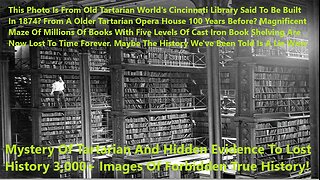 8:23:08
8:23:08
What If Everything You Were Taught Was A Lie?
20 days agoMystery Of Tartarian And Hidden Evidence To Lost History 3,000+ Images Of Forbidden History
4.39K4 -
 2:48
2:48
Steven Crowder
18 hours agoCROWDER CLASSICS: What’s This? | Nightmare Before Kwanzaa (Nightmare Before Christmas Parody)
224K12 -
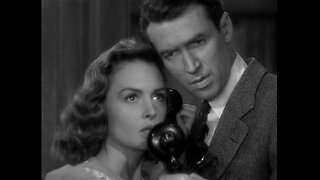 33:49
33:49
Quite Frankly
15 hours agoThe Christmas Eve Midnight Telethon
21.9K4 -
 2:12:46
2:12:46
Price of Reason
14 hours agoAmber Heard BACKS Blake Lively Lawsuit Against Justin Baldoni! Is Disney CEO Bob Iger in TROUBLE?
10.2K7 -
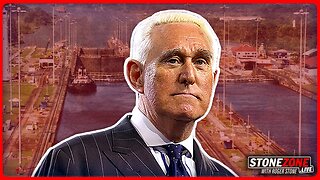 1:01:17
1:01:17
The StoneZONE with Roger Stone
9 hours agoChristmas Edition: Why the Panama Canal is Part of the America First Agenda | The StoneZONE
60.9K22 -
 LIVE
LIVE
LFA TV
19 hours agoLFA TV CHRISTMAS EVE REPLAY
1,554 watching -
 4:33:48
4:33:48
tacetmort3m
1 day ago🔴 LIVE - THE ZONE KEEPS PULLING ME BACK - STALKER 2 - PART 15
48K12 -
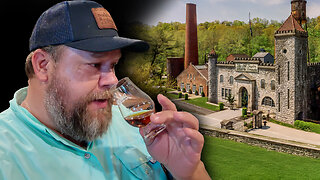 22:45
22:45
Brewzle
16 hours agoI Went Drinking In A Real Bourbon Castle
32.4K3 -
 48:36
48:36
PMG
1 day ago $2.50 earned"Parkland Parent Speaks Out On Kamala Harris Using Victims"
25.2K3 -
 4:06
4:06
The Lou Holtz Show
14 hours agoCoach Lou Holtz’s Heartfelt Christmas Message 🎄 | Family, Faith & Notre Dame Spirit 💚 #christmas
18.9K